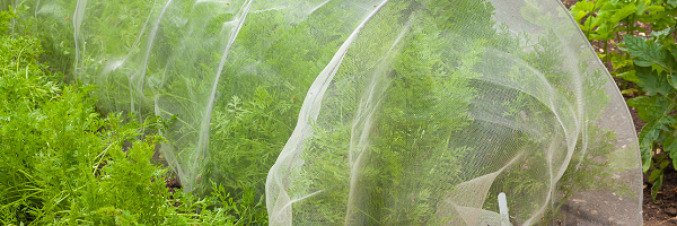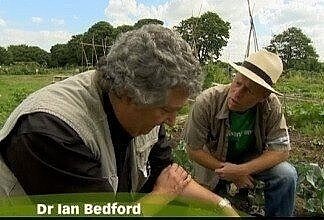
The Stealthy Siege of Carrot Root Flies on Garden Crops
5 Minute Read
Dr Ian Bedford tells us everything we need to know about the 'bug of the month' for October, the carrot root fly.Anyone who has grown carrots and parsnips will likely have encountered Psila rosae, the Carrot root fly. A serious plant pest, whose larvae feed specifically on the roots of plants within the Umbelliferae family, such as carrot, parsnip, celery and parsley.
Rarely noticed as adults, Carrot Root flies are small shiny black flies, about 8mm in length with reddish brown legs, and they will emerge throughout the year as they hatch from underground pupae. After mating, the female root flies will detect and follow the unique volatile chemicals (VOCs) that umbellifers emit from their leaves and roots. And when the plants are found, they begin laying their eggs in the soil around them.
After just a few days, the eggs hatch into tiny white maggots that initially feed on the plant’s root hairs, before tunnelling into the primary root. At this stage, the only visual sign of their presence will be a small circular entry hole in the root. However, over the following weeks, the infestation becomes much more obvious, as open rust-coloured wounds develop across the root.
The plant will then respond to the wounding by producing a damage-mitigating pigment called Anthocyanin, which gives its leaves a red appearance. This is a useful sign to growers that their crop is sustaining root damage.
As they continue to feed on the roots, the Carrot Root fly maggots become creamy, and orange in colour and grow to a length of 9mm before they disperse from the root to pupate within the surrounding soil. Over the following weeks, adult flies will begin hatching from the pupae to produce an often unsynchronised, second-generation of carrot root fly that, after mating will start to lay eggs around any Umbellifers that are still growing in the ground.
As the growing season comes to an end, the maggots that will have resulted from those second-generation eggs, will either have pupated back within the soil to overwinter, or they’ll remain as dormant maggots within the umbellifer roots until the following spring.

Controlling Carrot root flies
Controlling Carrot root flies on home-grown crops is not straightforward, since there are no pesticides allowed for home use and only a limited amount of success from natural enemies. So, it’s often the case that a degree of root fly infestation will have to be accepted. Even the commonly advised cultural methods of using vertical barriers and companion plants to block and repel adult flies have not often been shown to reliably control Carrot root flies.
However, it’s certainly worth trying an environmentally friendly option, which can include growing a root fly-tolerant cultivar. Also, if possible, avoid growing umbellifers where they were grown the previous year, and perhaps try sowing the seeds during late spring and covering them with an insect-proof netting or fleece.
But whatever defence is planned against Carrot Root fly, it’s important to harvest any umbellifers that remain in the soil before the end of winter as these could potentially contain dormant maggots. Also, turn over the soil a few times before the start of spring, which will expose overwintering Carrot Root fly pupae to frosts and insectivorous birds.

About Dr Ian Bedford
Ian has been fascinated by the bug world for as long as he can remember. From studying butterflies on the South Downs as a youngster, he went on to pursue a career in Research Entomology and ran the Entomology Dept at the John Innes Centre in Norwich up until his recent retirement.VISIT WEBSITE

'Bug of the month'
Visit our 'bug of the month' archive.
Every month Ian will share his knowledge on how to protect your plants and gardens from preventable pest invasions while providing valuable insights into the insects regularly found in our gardens.
find out more
Comments (0)
Why not be the first to send us your thoughts?
